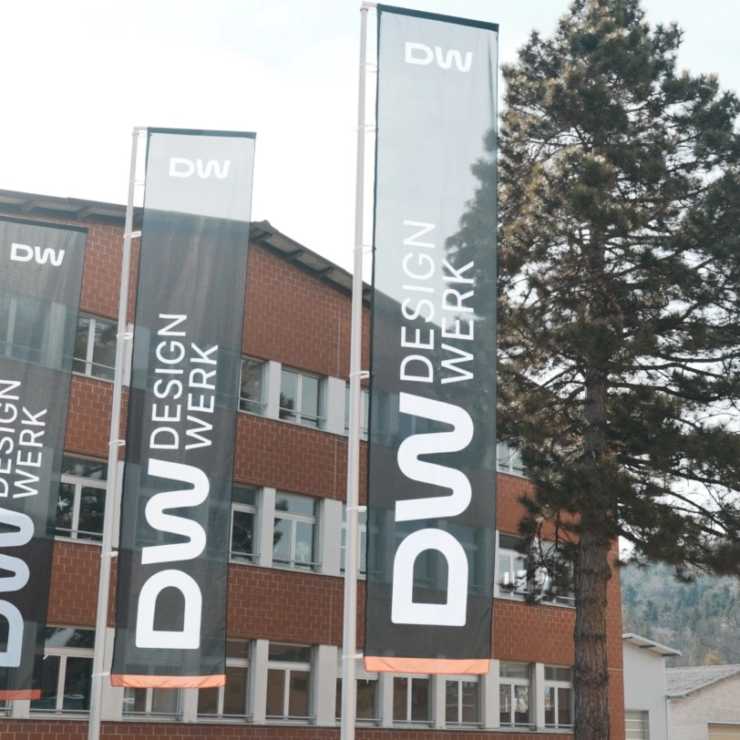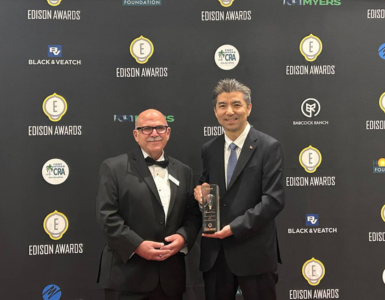Designwerk expands battery portfolio with LFP cell technology.
Whether it’s a champion in terms of service life or range – Designwerk Technologies AG has the right battery technology for every logistics service provider with special requirements for electromobility. The battery cell with lithium iron phosphate cell technology (LFP) is new in the portfolio of the Swiss electromobility specialist.
From the beginning of 2024, it will provide the energy to drive the fully electric HIGH CAB Semi Lowliner 4x2T. LFP batteries are characterized in particular by a high number of charging cycles and a long service life. The lower overall height of the smaller LFP battery allows it to be used in low-liners, which enables up to 15 percent higher volume capacity or a third level of lattice boxes for automotive applications and, above all, is used in distribution traffic with a shorter range than on long-haul routes.
Companies in long-distance transport logistics, which are dependent on the highest energy densities due to the required range, continue to benefit from the high-voltage battery systems with nickel-manganese-cobalt cell technology (NMC) from the in-house Designwerk production.
The heart of every electric truck is the battery. It supplies the energy required for the drive. The requirements for the battery system are as different as the Designwerk customers. The high-voltage battery systems with LFP technology from the production of the electromobility specialists have an energy density of 141 Wh/kg with a relatively small construction volume and a capacity of 170 kilowatt hours.
🔥 What about we co-host a webinar? Let's educate, captivate, and convert the battery economy!
Batteries News is the global go-to online magazine for the battery industry, we can help you host impactful webinars that become a global reference on your topic and are an evergreen source of leads. Click here to request more details
The cells manage without critical materials such as nickel, cobalt or manganese. Another strength of the LFP cell is its higher cycle stability. If the capacity of a battery is reduced by 20 percent, it is usually no longer suitable for use in an electric truck.
Thomas Prohaska, Product Manager Battery Systems at Designwerk, said:
With LFP cells, we expect the end of life after at least 3000 cycles, with NMC cells it is after around 2000 cycles.
“With LFP, the maximum mileage for the vehicle is significantly higher.”
The technology thus meets the same longevity requirements as comparable conventional drive trains with combustion engines, even with smaller capacities.
Battery capacities of up to 1000 kilowatt hours possible
If range and low weight are required, the high-voltage battery systems with existing NMC cell technology are used in Designwerk commercial vehicles. The reason: “They guarantee a very high energy density,” says Prohaska. The latest generation of Designwerk models has a capacity of up to 250 kilowatt hours and an energy density of 181 Wh/kg.
Capacities of up to 1000 kilowatt hours are possible in one unit or connected to battery sets with several megawatt hours.
Markus Erdmann, Product Manager E-Trucks at Designwerk, said:
Ranges of up to 570 kilometers and daily ranges of more than 900 kilometers are so realistic.
“This makes us the industry leader.”
A range champion, for example, is the MID CAB Car Carrier 6x2R car transporter developed jointly with Kässbohrer. With a charging capacity of 350 kilowatts, short downtimes are guaranteed: the battery can be charged to 80 percent capacity in less than two hours.
Designwerk ensures disposal with a minimal impact on the environment
Both high-voltage battery systems are manufactured by Designwerk in the Swiss factory in Winterthur. The respective modules from the automotive industry consist of several cells that store and release the energy. The overall system consists of a housing with thermal insulation to protect the battery modules from the outside world.
The modules are kept in their ideal temperature range by means of cooling plates. Protective functions are ensured due to the battery management system (BMS), which is optimally tailored to the chemistry and permanently monitors the entire system and communicates with the higher-level system. After use in the vehicle, the battery is checked for further use, for example in a stationary application as an industrial storage device or as a buffer storage device in a charging station (mega charger).
LFP or NMC? Designwerk solves performance needs depending on the application
The first battery systems from Designwerk have been in use since 2015 and prove themselves every day. The electromobility specialist solves the installation space and performance requirements individually, depending on the application.
Due to the expanded battery portfolio, logistics service providers who use the HIGH CAB Semi Lowliner 4x2T will benefit from a more durable solution in the future. Transport companies – for example from automotive logistics – who use the MID CAB Car Carrier 6x2R continue to benefit from maximum ranges and the proven high-voltage battery systems with NMC cell chemistry, which were only recently presented with even higher energy densities.
READ the latest Batteries News shaping the battery market
New battery cells for the HIGH CAB Semi Lowliner, Designwerk expands battery portfolio with LFP cell technology, April 19, 2023







